
Genesis. Creating illustrations depicting the world's creation through various civilizations' myths is a fascinating project. These illustrations would capture the diverse and rich cultural interpretations of creation across civilizations, offering viewers a visual journey through the myths and stories that have shaped humanity's understanding of the world. Here are some of the:
1. Japanese Mythology: Izanagi and Izanami: The story shows the divine couple Izanagi and Izanami stirring the ocean with a jeweled spear to create the Japanese islands.
2. The Christian myth of creation in seven days, as outlined in the book of Genesis, describes God creating the world over a week:
Day 1: God creates light and separates it from darkness.
Day 2: God creates the sky or firmament, separating waters above from waters below.
Day 3: God separates the waters to form seas and dry land and creates vegetation.
Day 4: God creates the sun, moon, and stars.
Day 5: God creates sea creatures and birds.
Day 6: God creates land animals and then forms man and woman.
Day 7: God rests, blessing the seventh day as a day of rest.
3. Norse Mythology - Ginnungagap: Illustrate the void, Ginnungagap, and the collision of fire and ice, which led to the world's creation.
4. Chinese Mythology—Pangu's Creation: The story illustrates Pangu, the giant, emerging from the cosmic egg and using his body to create the earth and sky. Two paintings were created for China, one liked by the author and the other by the customer.
5. Egyptian Mythology—Atum's Creation: The story illustrates Atum, the creator god, arising from the waters of chaos (Nun) and using his creative powers (Shu and Tefnut) to form the world.
6. In Slavic mythology, creation is often associated with the god Rod emerging from a primordial cosmic egg or ocean. He shapes the world, creating landscapes, plants, animals, and humans. The concept of the World Tree also plays a significant role, symbolizing the universe's interconnectedness. Various deities, such as Perun, are sometimes depicted as assisting in the creation process.
7. Mayan Mythology - Popol Vuh: Depict the gods Tepeu and Gucumatz, creating humanity from maize dough and their attempts to fashion humans from various materials.
8. Aboriginal Australian Mythology—Dreamtime: Show the Dreamtime, the period of creation in Aboriginal mythology, when ancestral beings shaped the land, animals, and plants.
9. Greek Mythology - Chaos: Depict Chaos, the primordial void, and the emergence of Gaia (Earth), Tartarus (Underworld), and Eros (Love), setting the stage for creation.
10. Hindu Mythology - Brahma's Creation: Show Brahma, the creator deity, emerging from a cosmic egg (Hiranyagarbha) and creating the world through thought and speech.
11. The Dogon myth of the world's creation tells that Amma created the first egg, from which the world emerged. Inside the egg were all the elements that formed the world. This myth also describes divine beings, such as the Nommo, divine fish, who imparted knowledge to the Dogon people.
This myth and the Big Bang theory are analogous: both describe the beginning of the world. The Big Bang theory states that the Universe originated from a singularity and expanded over time.
12. J.R.R. Tolkien's world creation myth, detailed in "The Silmarillion," describes the Music of the Ainur. In this myth, the supreme deity Eru Ilúvatar and the Ainur sing the world into existence, with each Ainu contributing to the music. Despite discord from the rebellious Ainu Melkor, Eru uses the music as a blueprint to create Arda, the world. This myth forms the basis for the events in Tolkien's Middle-earth stories.
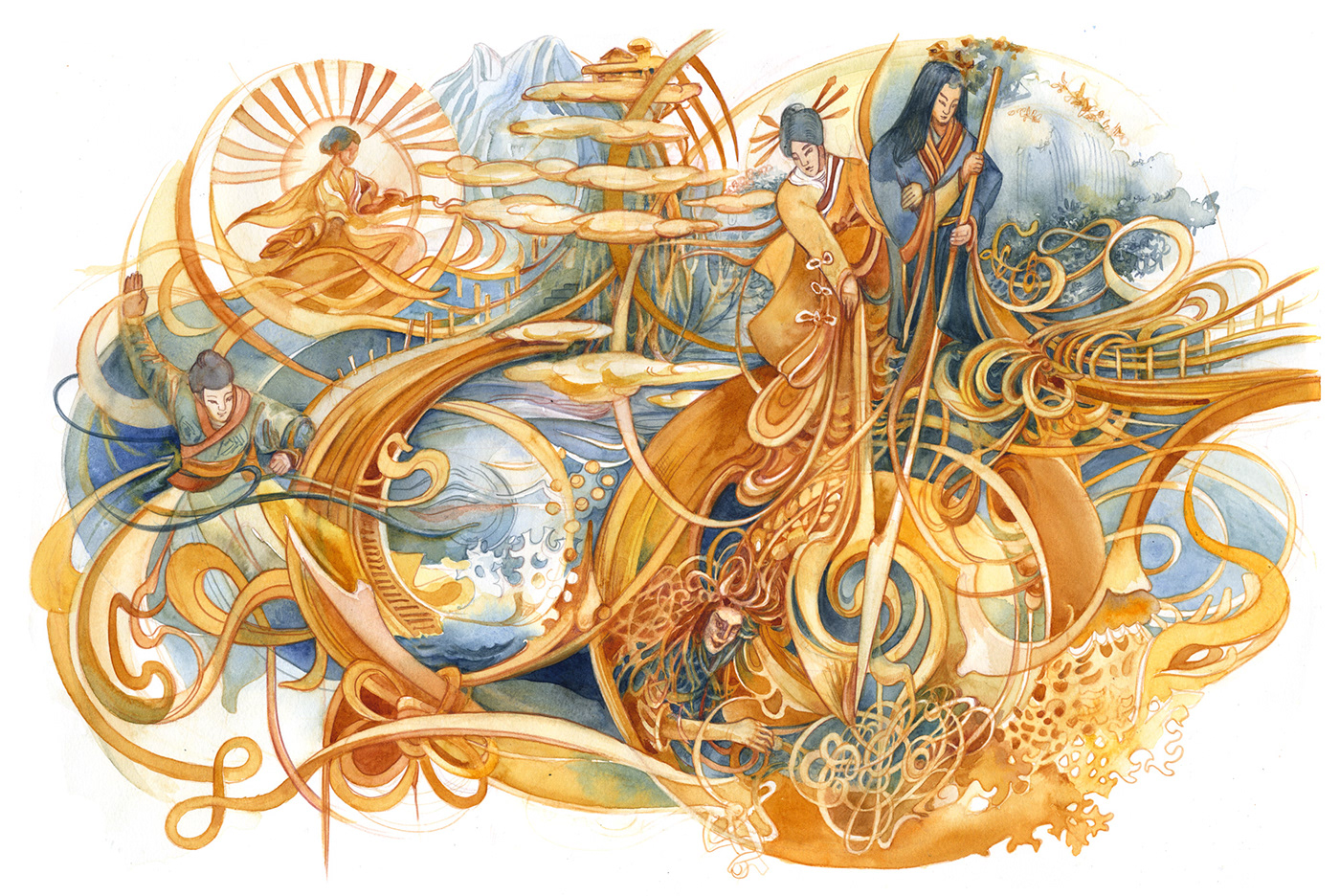

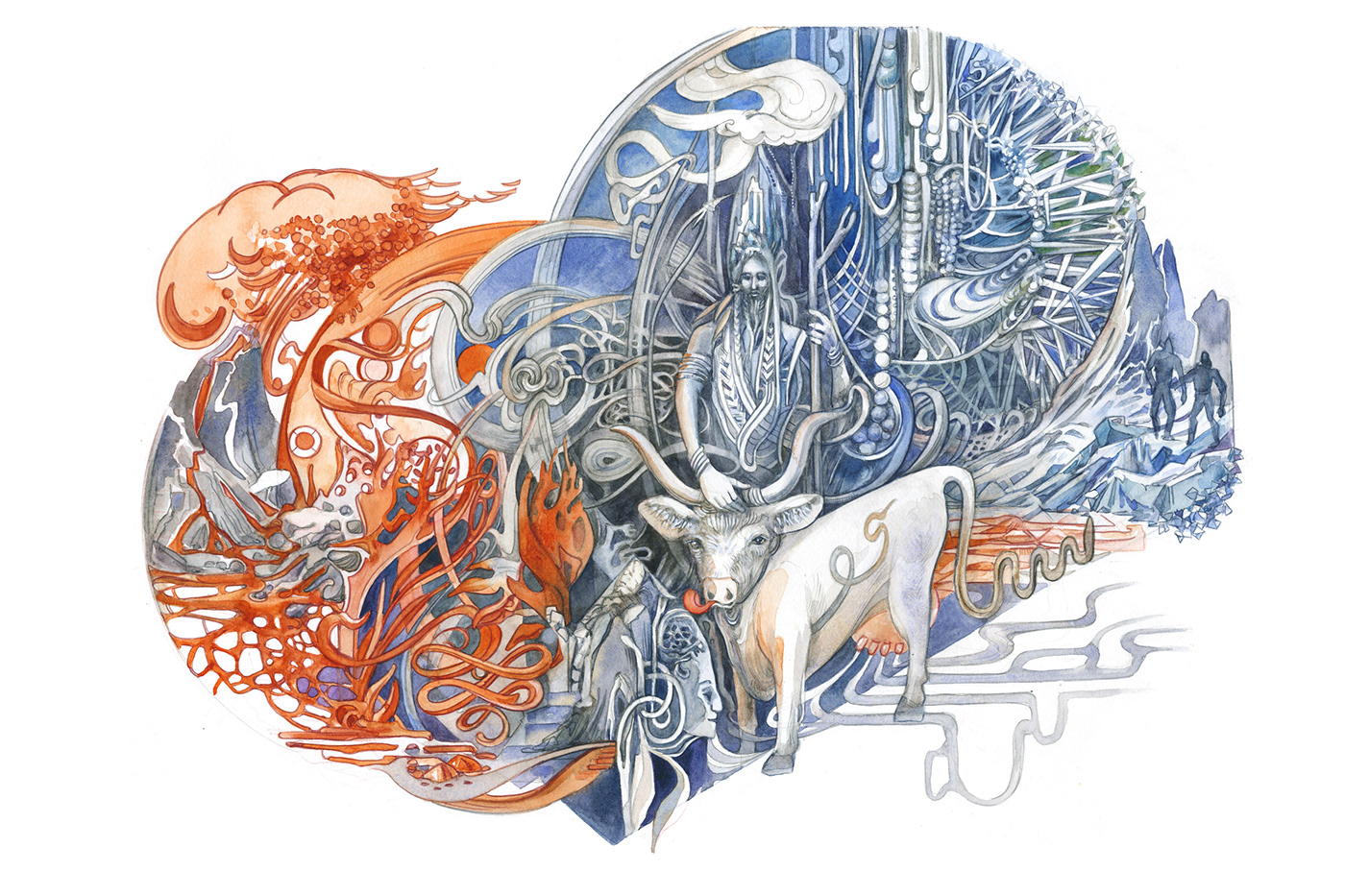


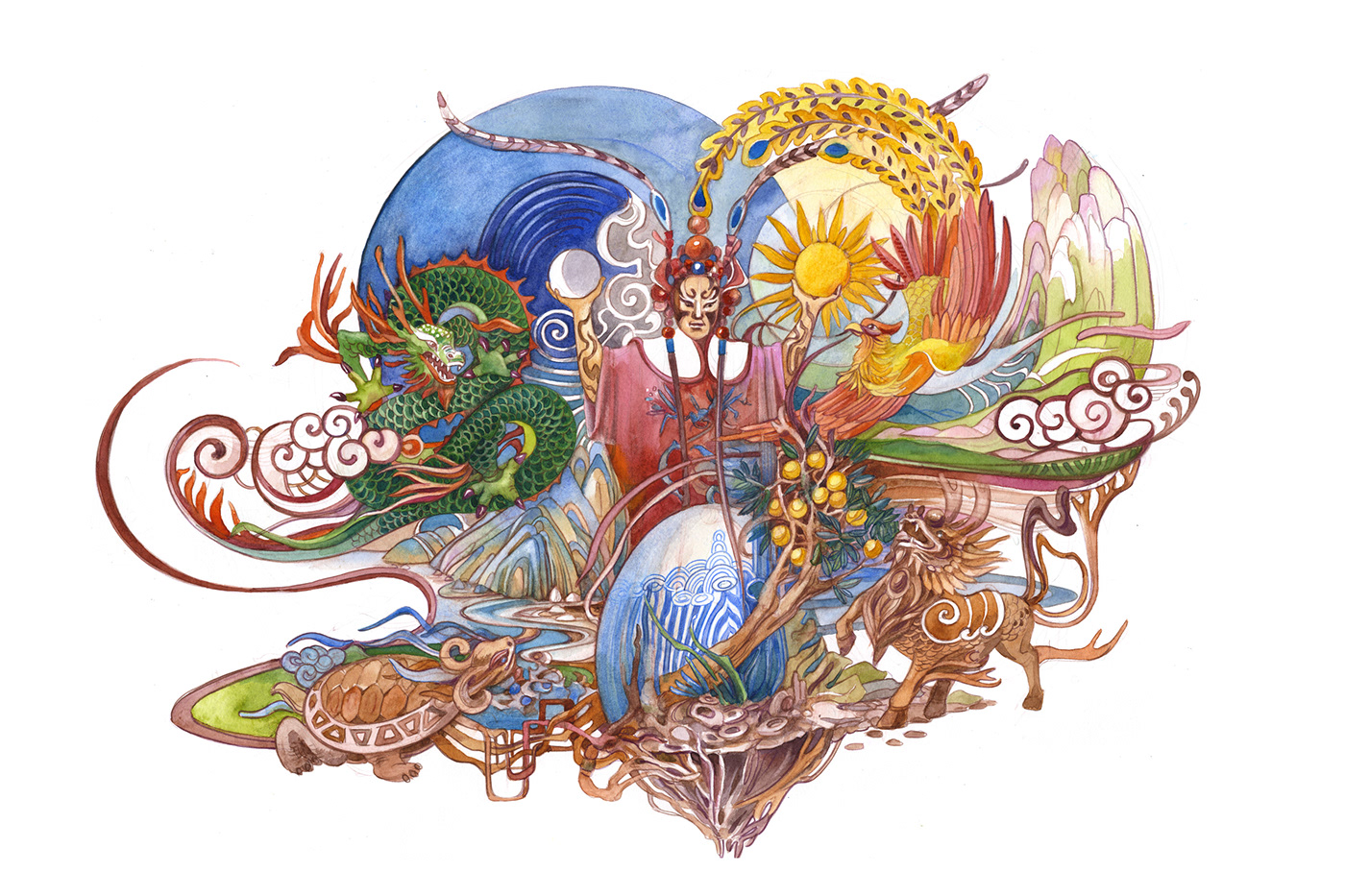



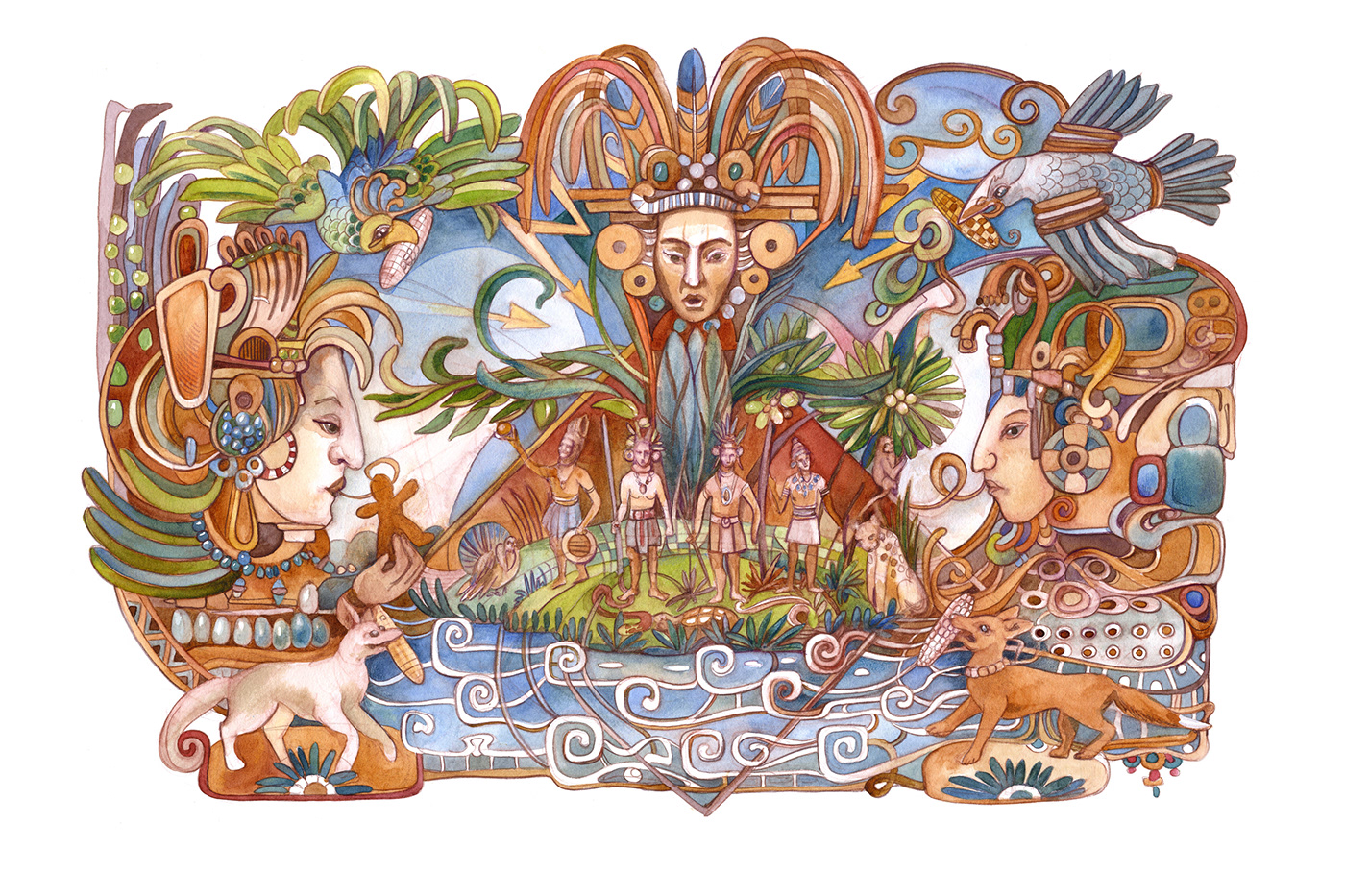



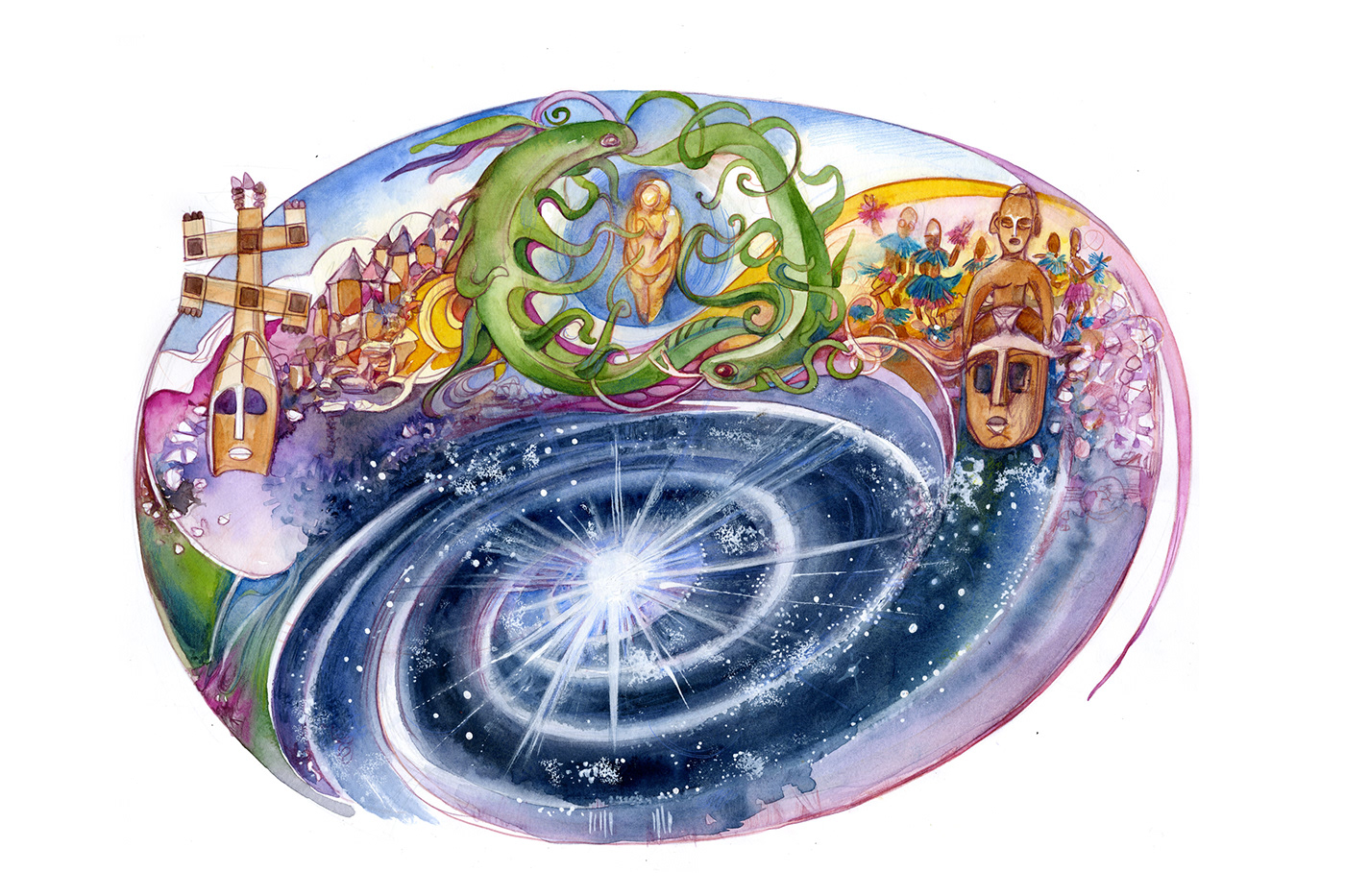


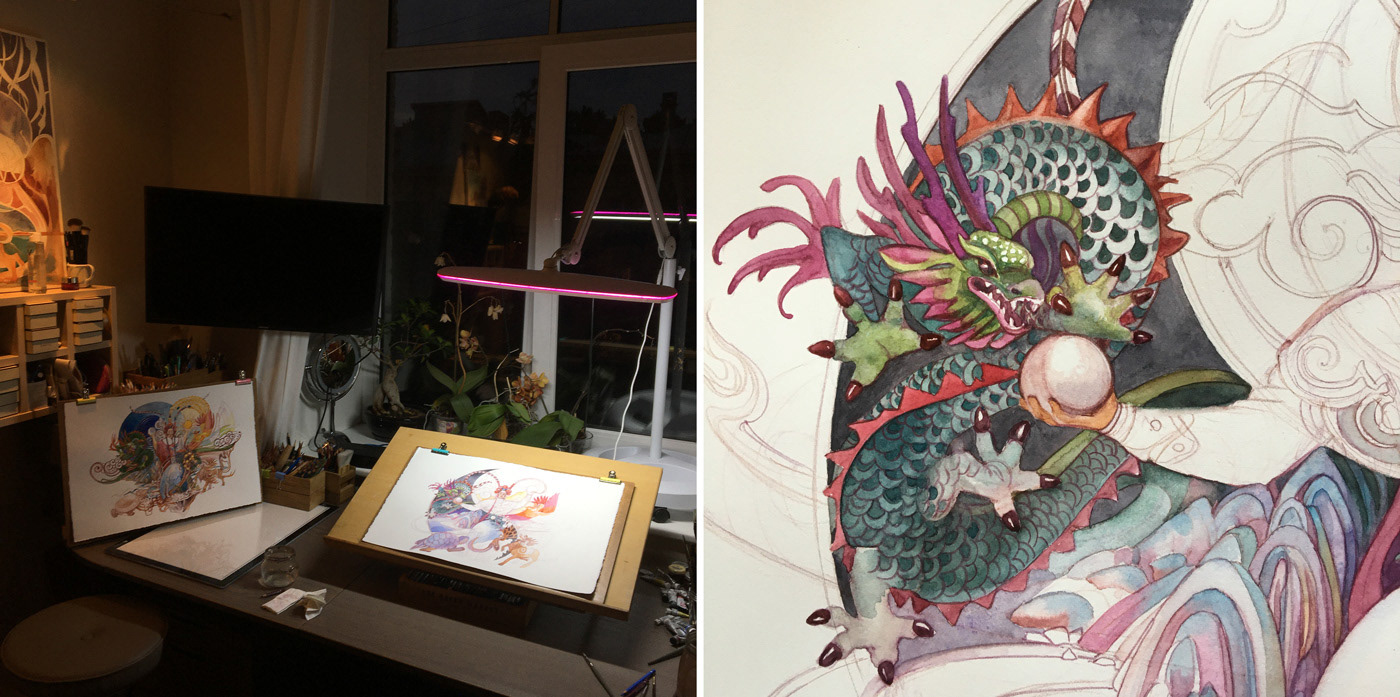


All illustrations were created using watercolor technique on paper sheets measuring 51*38 cm each, in 2022.
Some of these original artworks are available for purchase at the official store irinavinnik.com
